The best land investing states offer exciting opportunities for investors looking to grow their wealth. This article explores key factors such as location, market trends, and economic indicators that influence land investments. Readers will discover how to identify high-demand areas, recognize emerging markets, and understand the importance of sustainability in land investment practices. With insights on smart growth and technology’s role, this comprehensive guide aims to equip investors with the knowledge needed to make informed decisions in the evolving landscape of land investment.
Important Points to Remember
- Certain states are the best for land investing.
- Smart growth leads to better profits.
- Check local laws before buying land.
- Research land value trends in each state.
- Consider future development in the area.
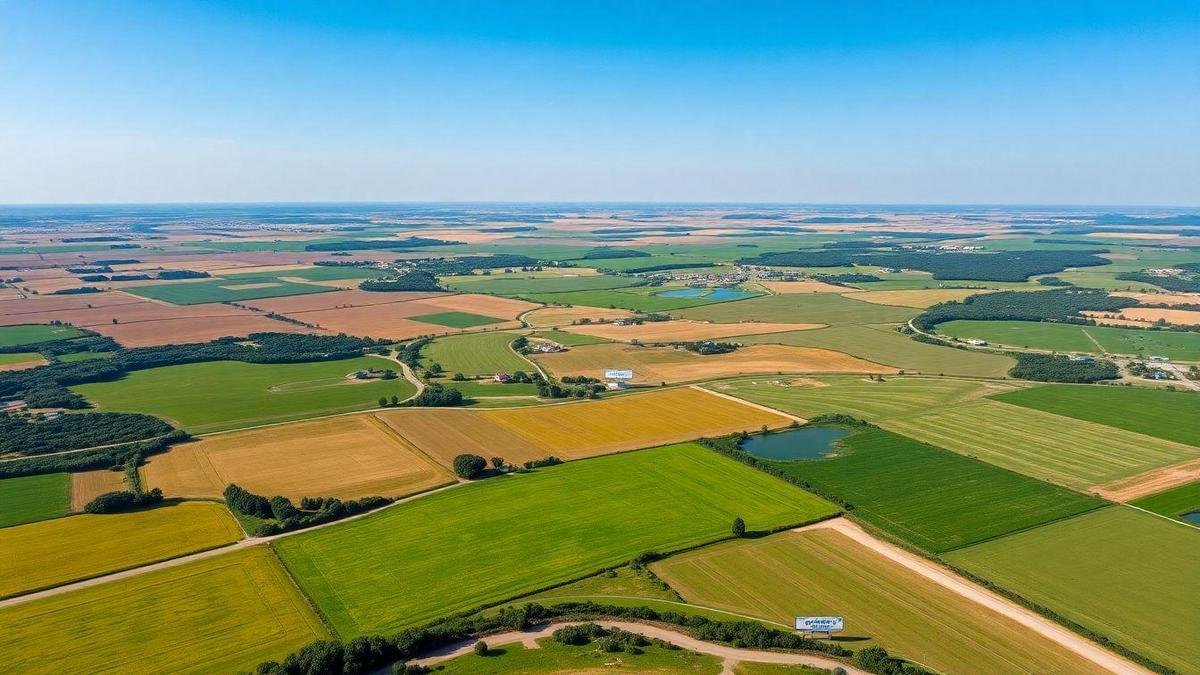
Overview of the Best Land Investing States
When considering land investment, various states stand out due to their potential for growth and profitability. Investors often look for states that offer a combination of affordable land prices, strong economic indicators, and favorable regulations. For detailed insights on the top states for land development, refer to the best states for land development.
Key Factors for Smart Growth
Investors should focus on key factors that drive smart growth in land investment:
- Economic Stability: States with a strong economy often attract more residents and businesses, leading to higher demand for land.
- Population Growth: Areas experiencing population increases typically see a rise in property values.
- Infrastructure Development: States investing in infrastructure, such as roads and schools, create more opportunities for land investment.
- Regulatory Environment: A business-friendly regulatory environment can facilitate land development. For more on navigating regulations, see our guide on land use restrictions.
Importance of Location in Land Investment
Location is crucial in land investment. A prime piece of land in a poor location may not yield the expected returns. Conversely, a lesser-known area with potential can become a goldmine. Here are factors that highlight the importance of location:
- Proximity to Urban Areas: Land near cities often appreciates faster due to demand for housing and business spaces.
- Natural Resources: States rich in natural resources may offer unique opportunities for development.
- Accessibility: Areas with good transportation links tend to attract more investment.
Understanding Market Trends in Top States
Understanding market trends helps investors make informed decisions. Here’s a quick look at some of the best land investing states and their current trends:
| State | Population Growth Rate | Average Land Price | Key Industries |
|---|---|---|---|
| Texas | 1.5% | $2,500/acre | Energy, Technology |
| Florida | 1.2% | $3,000/acre | Tourism, Agriculture |
| North Carolina | 1.4% | $4,000/acre | Finance, Technology |
| Arizona | 1.8% | $3,500/acre | Real Estate, Healthcare |
Investors should keep an eye on these trends. For instance, Texas, with its booming economy and low land prices, remains a hot spot. Florida’s tourism industry drives demand, while North Carolina’s tech sector boosts land values.
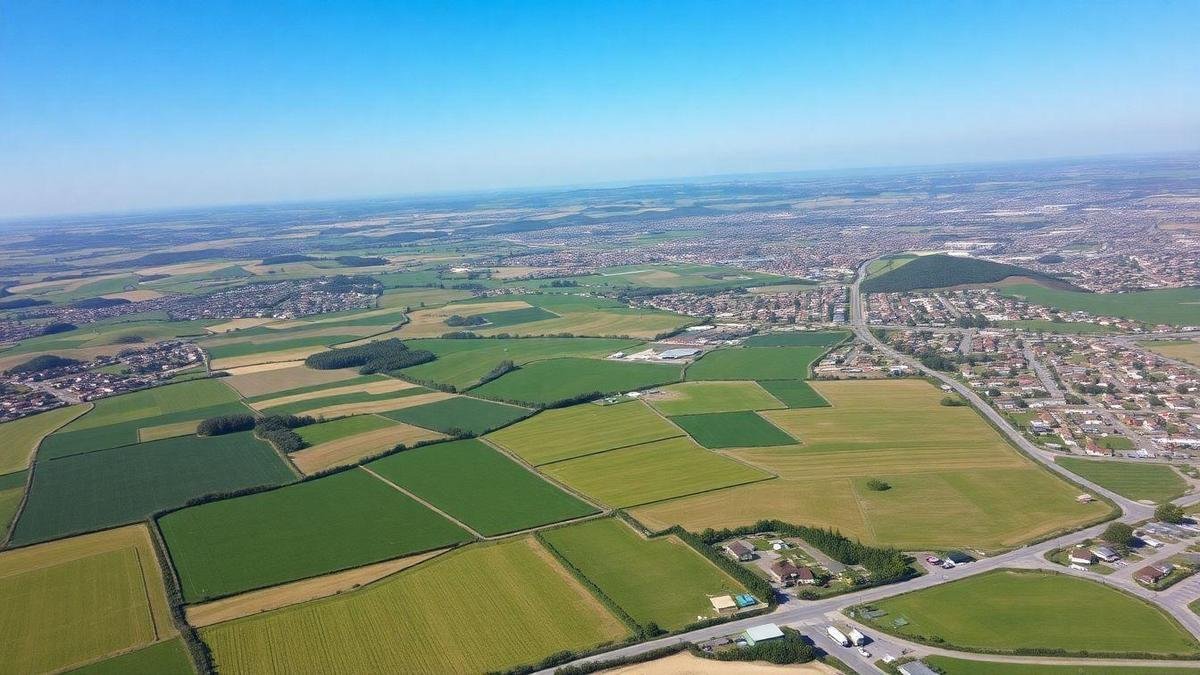
Economic Indicators of Top Land Investment States
Analyzing Job Growth Rates
Job growth rates serve as a crucial indicator for land investors. States with strong job growth often attract individuals and families seeking employment, driving demand for housing and commercial properties. For instance, states like Texas and Florida have seen significant increases in job opportunities, making them some of the best land investing states. For a deeper understanding of job growth, explore our feasibility study.
| State | Job Growth Rate (2022) | Key Industries |
|---|---|---|
| Texas | 4.5% | Technology, Energy |
| Florida | 4.2% | Tourism, Healthcare |
| Georgia | 3.8% | Logistics, Film |
| Utah | 3.5% | Tech, Manufacturing |
These figures illustrate how job growth can drive the real estate market. Investors should pay close attention to these rates, as they often correlate with increased demand for land.
Evaluating Population Growth Trends
Population growth trends are vital in land investment. States that experience rapid population increases often see a surge in demand for both residential and commercial properties. For example, North Carolina and Arizona have been popular destinations for new residents, often due to their favorable climates and job opportunities.
| State | Population Growth Rate (2022) | Main Attractions |
|---|---|---|
| North Carolina | 1.5% | Beaches, Mountains |
| Arizona | 1.7% | Desert, National Parks |
| Idaho | 2.0% | Outdoor Activities |
| Nevada | 2.3% | Entertainment, Tourism |
As the population grows, so does the need for infrastructure, schools, and services, which can lead to increased land values. Investors should monitor these trends to make informed decisions.
The Role of Economic Stability in Investment
Economic stability is key for anyone looking to invest in land. States with stable economies provide a safer environment for investments. For example, Minnesota and Washington have shown resilience during economic downturns, making them attractive options for investors. To understand the dynamics of economic stability, refer to our insights on ROI in land development.
| State | Economic Stability Rating | Notable Economic Features |
|---|---|---|
| Minnesota | High | Diverse Economy |
| Washington | High | Tech Hubs, Agriculture |
| Colorado | Moderate | Tourism, Tech |
| Ohio | Moderate | Manufacturing, Services |
A stable economy can lead to consistent land value appreciation. Investors should evaluate these factors when choosing where to invest.
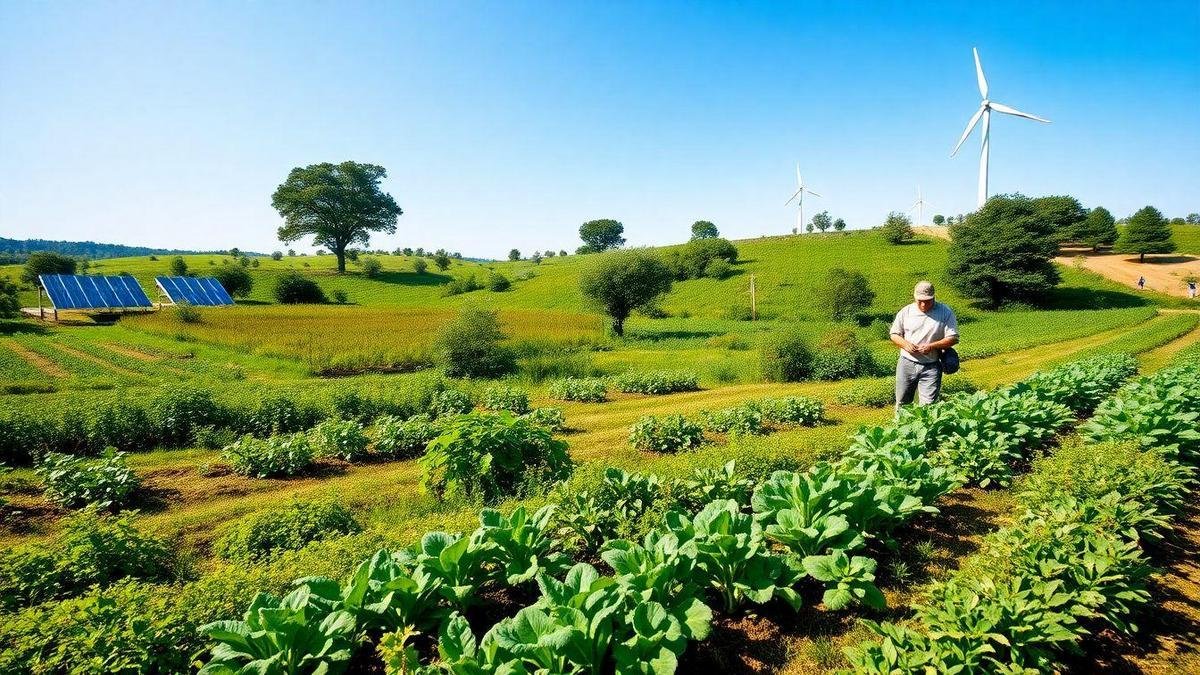
Sustainable Land Investment Practices
Benefits of Eco-Friendly Development
Investing in eco-friendly development brings a wealth of advantages. First and foremost, it can lead to higher property values. Buyers today are more aware of environmental issues and often prefer homes that are energy-efficient and sustainable. This trend can significantly boost the marketability of properties.
Moreover, eco-friendly developments can reduce operating costs. Energy-efficient buildings consume less energy, which translates to lower utility bills. This savings can be a big draw for potential tenants and buyers alike.
Additionally, sustainable projects often enjoy government incentives. Many states offer tax breaks or grants for developments that meet specific environmental standards, making investing in green projects even more appealing.
States Leading in Sustainable Practices
Some states stand out as leaders in sustainable land development. Here’s a quick look at a few of them:
| State | Key Sustainable Practices |
|---|---|
| California | Strong renewable energy policies |
| Oregon | Green building codes and incentives |
| New York | Urban green spaces and eco-friendly transit |
| Washington | Low-impact development regulations |
These states have taken significant steps to promote sustainability, focusing on renewable energy, green spaces, and smart urban planning. Investors looking for the best land investing states should consider these areas, as they are paving the way for the future of land development.
Why Sustainability Matters in Land Investing
Sustainability is not just a buzzword; it is a crucial factor in land investing. As climate change becomes more pressing, the demand for sustainable practices is rising. Investors need to recognize that properties built with sustainability in mind are likely to retain value over time.
Furthermore, investing in sustainable land practices can lead to a healthier community. Eco-friendly developments often include parks, walking paths, and other amenities that enhance the quality of life for residents. This focus on community well-being can attract more buyers and tenants, making it a smart investment choice.

Real Estate Investment States with High Growth Potential
Identifying High-Demand Areas
Investors often look for high-demand areas when considering real estate investments. These regions typically show strong population growth, increasing job opportunities, and rising property values. States like Texas, Florida, and North Carolina stand out. For instance, Texas has seen a surge in tech jobs, attracting young professionals. This influx increases the demand for housing, making it a prime spot for investment.
The Impact of Infrastructure on Land Value
Infrastructure plays a crucial role in determining land value. Areas with well-developed roads, public transport, and utilities tend to attract more buyers. For example, states investing in new highways or public transit systems often see a spike in property values. Here’s a quick look at how infrastructure influences land value:
| State | Infrastructure Investment | Impact on Land Value |
|---|---|---|
| Texas | New highways | Increased accessibility |
| Florida | Public transit expansion | Higher demand for housing |
| North Carolina | Utilities upgrades | Improved living standards |
Future-Proofing Investments in Growing Regions
Investing in growing regions is about looking ahead. Investors should consider areas that are not just thriving now but also have future potential. This means researching upcoming developments, zoning changes, and economic forecasts. For example, investing in areas near planned tech hubs or universities can be a smart move. These investments are likely to appreciate as the region grows. For insights on zoning, see our beginner’s guide to land zoning.

Smart Growth Land Investments
What is Smart Growth?
Smart Growth is a planning approach that focuses on creating sustainable communities. It aims to balance economic development with environmental protection, encouraging efficient land use and promoting compact, walkable neighborhoods. It also emphasizes the need for mixed-use spaces where residential, commercial, and recreational areas coexist. The goal is to create vibrant communities that offer a high quality of life for residents while attracting investors.
How Smart Growth Benefits Investors
Investors can gain significantly from Smart Growth initiatives. Here are a few key benefits:
- Increased Property Values: Well-planned areas often see rising property values due to their attractiveness and accessibility.
- Lower Infrastructure Costs: Smart Growth reduces the need for extensive roads and utilities, saving money on infrastructure.
- Stronger Community Engagement: Communities that embrace Smart Growth typically have active residents who support local businesses and initiatives, creating a robust local economy.
- Sustainability: Investments in sustainable projects often receive incentives, such as tax breaks or grants. For further details, check our strategy for smart growth.
| Benefit | Description |
|---|---|
| Increased Property Values | Higher demand leads to price appreciation. |
| Lower Infrastructure Costs | Savings from reduced construction and maintenance. |
| Stronger Community Engagement | Active participation fosters economic growth. |
| Sustainability | Incentives for eco-friendly developments. |
Examples of Smart Growth in Action
Many cities around the world have successfully implemented Smart Growth principles. For example:
- Portland, Oregon: Known for its urban growth boundary, Portland has limited urban sprawl, leading to a thriving downtown area with public transportation options.
- Copenhagen, Denmark: This city focuses on biking and walking, making it easy for residents to navigate without cars, improving air quality and reducing traffic congestion.
- Vancouver, Canada: Vancouver has implemented mixed-use developments that blend residential, commercial, and recreational spaces, creating vibrant neighborhoods.
These examples show how Smart Growth can transform communities and create opportunities for investors.

Land Investment Opportunities in Emerging Markets
Recognizing Emerging Trends
In today’s fast-paced world, investors are always on the lookout for opportunities that can bring substantial returns. Emerging markets often present such opportunities, as they can be a goldmine for land investment. Investors need to pay attention to trends that signal growth. For instance, the rise of urbanization in countries like India and Brazil is creating a demand for residential and commercial properties. Similarly, advancements in technology are making land more accessible, allowing investors to tap into potential profits.
States with Untapped Land Potential
Several states in the U.S. are often overlooked but hold significant land investment potential. Here are some of the best land investing states that deserve attention:
| State | Key Features | Investment Potential |
|---|---|---|
| Texas | Rapid population growth | High demand for housing |
| Florida | Tourism and retirement hotspot | Opportunities in resorts |
| North Carolina | Growing tech sector | Land for commercial use |
| Tennessee | Affordable land prices | Residential development |
These states not only offer affordable land but also a growing economy, making them attractive for investors.
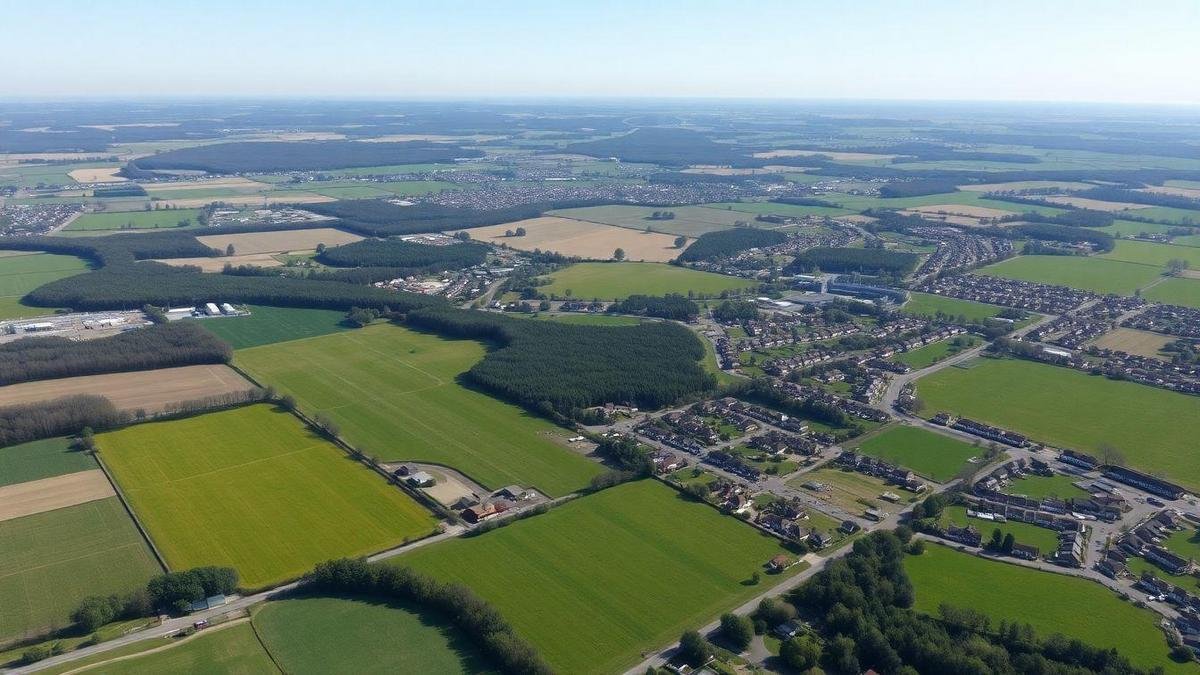
Profitable Land Investment States
Factors Influencing Profitability
When considering land investments, several key factors can significantly impact profitability:
- Location: Proximity to urban areas, infrastructure, and amenities can drive demand.
- Zoning Laws: Understanding local regulations can open doors to development opportunities. For more on this, see our guide to land development permits.
- Market Trends: Keeping an eye on real estate trends helps investors make informed decisions.
- Economic Indicators: Local job growth and population increases often lead to higher land values.
Case Studies of Successful Investments
A few notable examples highlight successful land investments that have yielded impressive returns:
- Texas: An investor purchased land near Austin, which saw a surge in tech jobs. Over five years, the land value doubled.
- Florida: In a coastal area, an investor acquired land for vacation homes. The demand for rentals skyrocketed, leading to a 150% return on investment in three years.
- Nevada: An investor bought land in an area slated for new highways. As construction began, land prices soared, resulting in a 200% profit.
Strategies for Maximizing Returns in Land Investments
To maximize returns, investors can adopt several strategies:
- Research Thoroughly: Understand local trends and future developments.
- Diversify Investments: Spread investments across various states to mitigate risks.
- Hold for Appreciation: Sometimes, waiting for the right moment to sell can lead to greater profits.
- Develop the Land: Consider building or improving the land to increase its value. For insights, see our guide on starting land development.
| Strategy | Description |
|---|---|
| Research Thoroughly | Analyze market trends and local regulations. |
| Diversify Investments | Invest in different locations to reduce risks. |
| Hold for Appreciation | Wait for the market to rise before selling. |
| Develop the Land | Increase land value through construction or upgrades. |
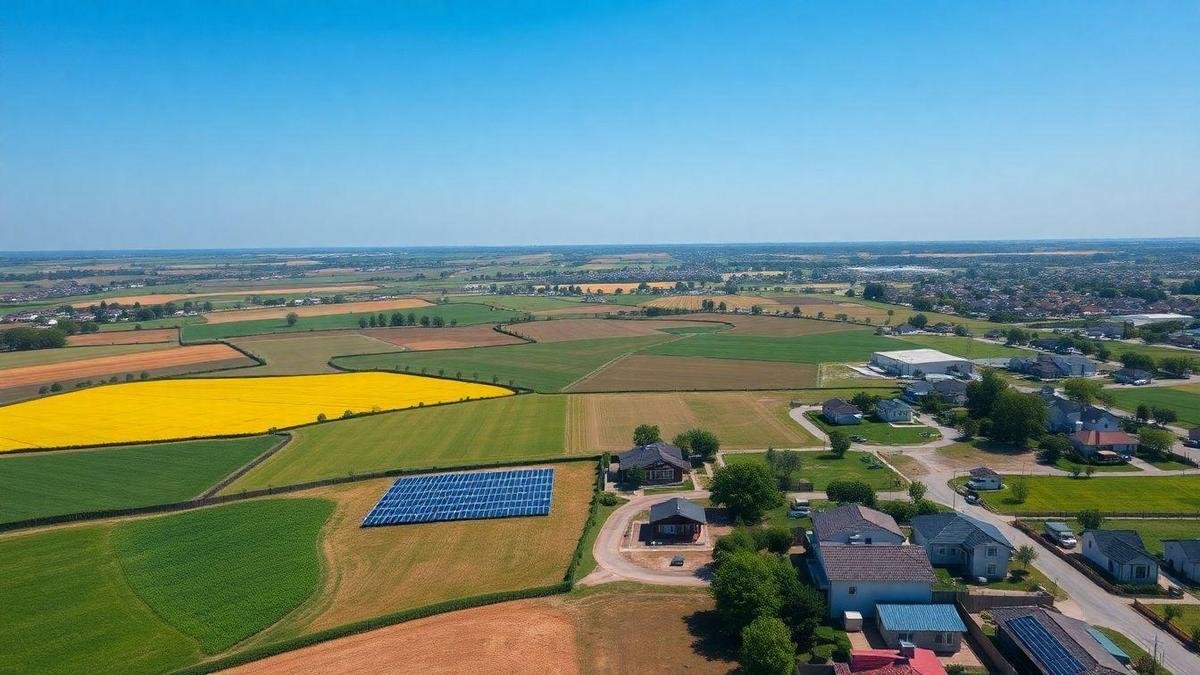
Trends in Land Investment for Future Growth
Current Trends Affecting Land Values
Land investment is influenced by several current trends that shape its value. One significant factor is urbanization. As more people move to cities, demand for land in urban areas rises, driving up prices. Sustainability is another trend. Investors are now looking for properties that meet eco-friendly standards, making land with sustainable features more valuable.
Additionally, technology plays a pivotal role. Innovations such as smart cities and remote work are changing where people want to live and work. As a result, land in suburban and rural areas may see increased demand.
Here’s a table summarizing the key trends affecting land values:
| Trend | Description |
|---|---|
| Urbanization | Increased demand for land in cities. |
| Sustainability | Higher value for eco-friendly properties. |
| Technology | Shift towards smart cities and remote work. |
Predictions for Future Land Investment Trends
Looking ahead, several predictions can be made regarding land investment trends. One prediction is that affordable housing will become a priority. As housing prices rise, investors will seek opportunities in areas where homes are more affordable.
Another prediction is the rise of mixed-use developments. Investors may focus on properties that combine residential, commercial, and recreational spaces, catering to the growing preference for living, working, and playing in the same area.
Lastly, rural land may gain attention. With the increase in remote work, people are looking for homes outside urban centers. This shift could lead to a rise in land values in less populated areas.
How to Stay Ahead in Land Investment Trends
To stay ahead in land investment, one must keep a close eye on market changes. Here are a few strategies:
- Research regularly: Staying informed about local and national trends can help identify opportunities.
- Network with experts: Engaging with real estate professionals can provide insights into emerging markets.
- Invest in technology: Using data analytics tools can help track property values and market trends.
By implementing these strategies, investors can position themselves favorably in a competitive landscape.

The Role of Technology in Land Investment
Using Data Analytics for Smart Decisions
In today’s fast-paced world, data analytics plays a crucial role in land investment. Investors can use data to make informed choices, identifying trends and opportunities that might otherwise go unnoticed. By analyzing various metrics, such as market demand, property values, and demographic shifts, they can pinpoint the best land investing states.
For instance, an investor might look at population growth in a specific area. If data shows a steady increase, it could signal a good time to invest. By leveraging data analytics, they can avoid costly mistakes and enhance their chances of success.
The Impact of Online Platforms on Land Sales
The rise of online platforms has transformed how land is bought and sold. Investors can now browse listings from the comfort of their homes, accessing a wealth of information at their fingertips. This shift has made the market more accessible, allowing buyers and sellers to connect easily.
Online platforms often provide tools for comparison, enabling investors to evaluate multiple properties side by side. This capability helps them make better decisions quickly. Additionally, social media and digital marketing strategies can reach a broader audience, increasing the chances of a successful sale.
Embracing Technology for Better Investment Outcomes
Adopting technology in land investment is not just a trend; it’s a necessity for those looking to thrive. By embracing these tools, investors can:
- Analyze market trends effectively
- Connect with potential buyers easily
- Streamline the buying process for efficiency
Investors who adapt to these changes will likely see improved outcomes. For example, using virtual tours can attract more buyers, showcasing properties without requiring physical visits. This approach saves time and resources while expanding the reach of listings.
Conclusion
In conclusion, the best land investing states present a wealth of opportunities for investors looking to enhance their portfolios. By focusing on key factors such as location, market trends, and economic indicators, investors can make informed decisions that align with their financial goals. Understanding the significance of sustainability and smart growth not only contributes to a healthier environment but also ensures long-term profitability. As the landscape of land investment continues to evolve, keeping a finger on the pulse of emerging markets and leveraging technology will be paramount for success.
With the right strategies in hand, investors can navigate the complexities of land investment and uncover hidden gems in the market. For those eager to further expand their knowledge and explore more insightful articles on land investment, they are encouraged to visit Land Development Hub.
No responses yet